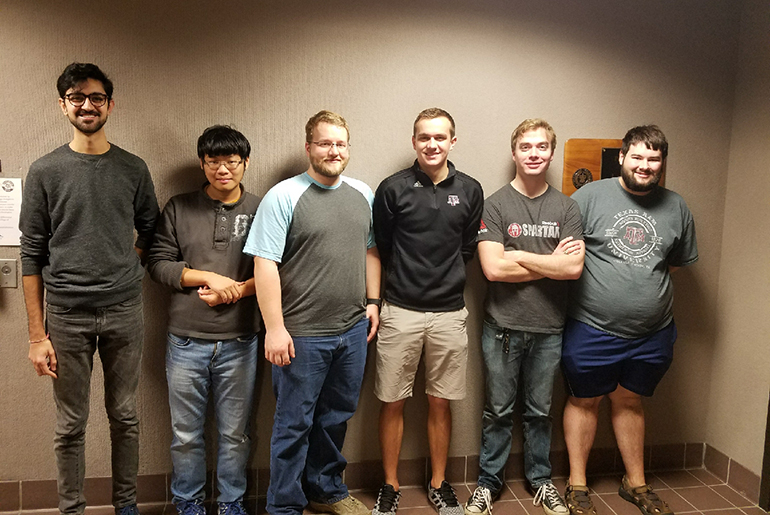
For every 100,000 people, there are 536 speech-impaired individuals who can benefit from the use of augmentative and alternative communication (AAC) devices.
Six students from the Department of Computer Science and Engineering at Texas A&M University were selected to participate in the eighth annual RICE 360° Global Health Technologies Design Competition held at Rice University in March. At the competition they presented their project, CommBo, a web-based, speech-generating picture communication board that alleviates the major pain points of AAC users.
The students formed Team CommBo as a senior design capstone group advised by Dr. Tracy Hammond, professor and director of the Sketch Recognition Lab at Texas A&M. The team is comprised of computer science and engineering senior undergraduate students Christopher Wilcoxen, Christopher Tsao, Cory Avra, Kaveet Laxmidas, Leon Wallace and Reed Spivey. In addition to Hammond, the team is mentored by graduate student and teaching assistant, Puneet Kohli and Seth Polsley, a doctoral student in the Sketch Recognition Lab.
CommBo offers customizability far beyond that of a physical picture board, and leverages machine learning to provide intelligent suggestions, enabling heightened communication that can be brought to any internet-connected device.
“This application provides much greater flexibility than the picture board systems that you usually see, and the fact that it can work on any device with a web browser allows for greater accessibility than similar systems,” Tsao said.
CommBo is designed for patients suffering from stroke-induced aphasia, autistic spectrum disorder or any trauma that impacts a person’s ability to communicate effectively.
Currently available AAC devices are either difficult to adjust or excessively expensive to own. CommBo is an accessible, modern and affordable application that improves common use cases of AAC picture boards. Its versatility makes it easy to use in medical settings, the home and almost anywhere throughout the world. With its implementation, potential users of traditional AAC devices can experience a heightened quality of life and unprecedented access to effective communication.
“We believe our application has the potential to change the medical community,” Avra said. “Our motivation comes from our drive to improve the lives of our friends, family members and humanity in general.”
The RICE 360° competition featured 21 student teams from national and international universities who presented their low-cost global health technologies.
“Presenting at such a prestigious competition is something I didn’t think I would be able to take part in during my undergraduate career,” Wallace said. “I am so happy that Texas A&M University provided me with this opportunity.”
Entries were judged on the quality of the problem definition, the effectiveness and potential impact of the design solution and the likelihood that the solution can be successful in improving healthcare delivery in low-resource settings by faculty, clinicians and private and public-sector partners from around the country.
“I am incredibly proud of what the students have accomplished,” Hammond said. “Even more so, I am excited about the educational enrichment opportunities the students had from participation in the design competition.”
